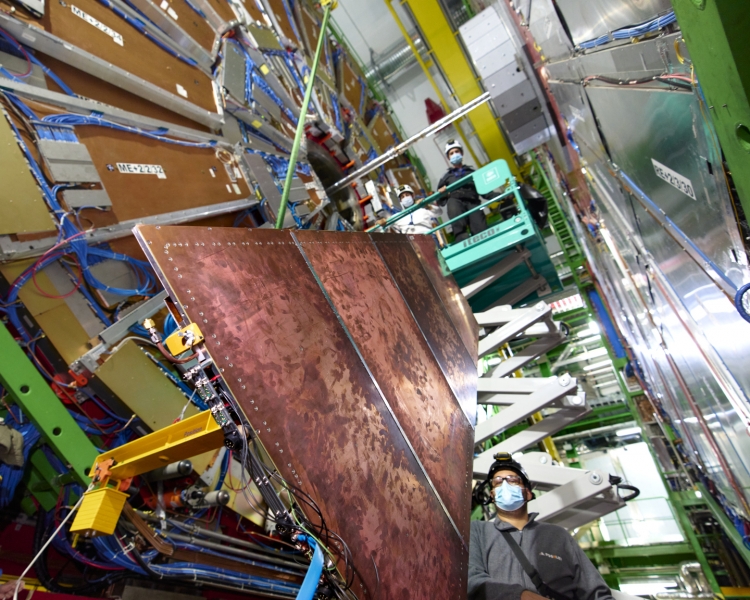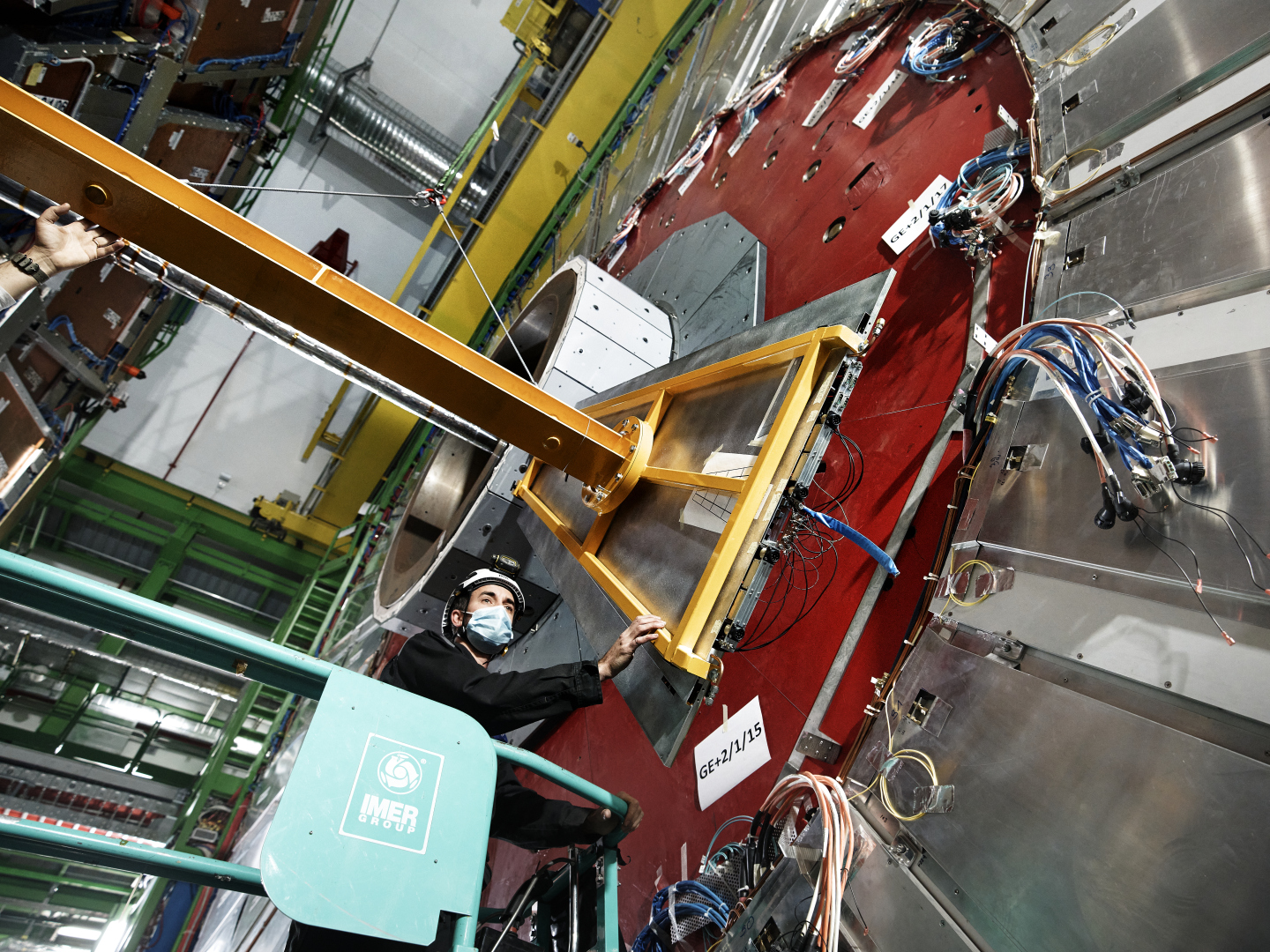
The Large Hadron Collider (LHC) has been providing particle collisions at larger and larger luminosities over the years, thanks to a series of upgrades. However, the most anticipated upgrade has yet to come: the High Luminosity LHC (HL-LHC). Here the collision rates will reach an excess of five times the LHC design, increasing our chances to observe rare interactions. But this great power comes at a price: the enormous rate of particles produced in the collisions will put stress on the LHC experiments. Therefore, the detectors will need to be upgraded to handle it.
At the Compact Muon Solenoid (CMS) experiment, many subsystems are being upgraded including the muon system. This system is located on the outer part of the experiment and consists of various types of gaseous chambers. In order for the muon system to cope with the higher rates, the experiment needs to quickly identify high momentum muons, as these could be a characteristic signature of new physics processes. To do so, a precise measurement of the muon bending angle is needed; this requires additional layers of chambers.
In the forward regions of the CMS Muon Endcaps, two novel gaseous detector technologies are being introduced, both capable of handling high particle rates: the improved Resistive Plate Chambers (iRPC), and the Gas Electron Multiplier (GEM). The iRPC technology will be used in the two outer stations of the muon endcaps, while GEMs are being installed in three rings of the first two stations. Each detector ring requires a different chamber design given the larger coverage closer to the beam pipe. The first GEM station (GE1/1) has already been produced and installed in the experiment. The second GEM station (GE2/1) is beginning mass production to be installed for Run 4.

GE2/1 demonstrator being maneuvered into place on the CMS experiment
Currently, the LHC is shut down to upgrade the detectors for Run 3. This offers a unique chance to install in CMS a GE2/1 chamber in its final version (the GE2/1 demonstrator) and to test it in the real conditions at the experiment, during the upcoming LHC Run 3. Meanwhile, the rest of the GE2/1 subsystem will be assembled and validated.
Operating a new subsystem in the CMS detector is no small task; with 72 total GE2/1 chambers, there can be unforeseen challenges. During operation, the chambers and the electronics will be exposed for long periods to high voltage, powerful magnetic fields, and strong radiation. By installing the GE2/1 demonstrator as a trial run, any possible issue can be identified and solved before installing the full station.
The GE2/1 demonstrator was constructed with parts from all over the world. Subsequently, the demonstrator was tested by checking for leaks, powering the high and low voltage, establishing communication with the electronics, taking scans of the electronics with test pulses, and verifying the detection abilities with cosmic rays. All of these tests were completed in October 2021, culminating in the approval of the demonstrator for installation. This first GE2/1 chamber was installed in CMS on Monday 8 November 2021. This marks an essential step towards completing the CMS Muon upgrades for HL-LHC.

GE2/1 demonstrator being carefully attached to the CMS experiment where it will be connected to low voltage, high voltage, and cooling.
For more pictures, visit the link: https://cds.cern.ch/record/2789916

